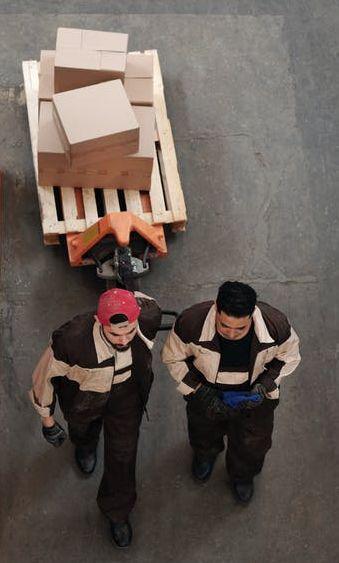Belgium is the fourth most productive country in the world, but our productivity growth has been sputtering. In this series we present four tips each time to boost productivity in the office and on the shop floor.
In the first part of this series we discussed the productivity of Belgian companies. Productivity growth in our country has been substandard in recent years. What also stands out in the figures are the large differences in productivity between companies in the same sector. For example, a company in the top 10% of best companies is three times as productive as a company in the bottom 10%.
In order to support Belgian companies with their productivity improvements, we collected a number of tips that we will publish at regular intervals. These tips focus on improvements that require little effort.
Tip 39: Stop batch production
Ask a child to put ten letters in envelopes, and chances are they will first fold all the letters, then put the letters in the envelopes and only then start sticking on the stamps. Dividing work into sub-tasks and performing it in batches is apparently ingrained from childhood. An alternative method is to complete the entire process piece by piece in a one piece flow. Many people seem to believe that working in batches is the fastest way. In practice, single piece flow production often proves to be a lot faster. Do you find this hard to believe? Do the envelope test yourself, or watch this envelope test video.
Batch production typically creates additional unnecessary operations. For example, each piece needs to be picked up several times, time is lost arranging the intermediate storage, and if an error is made, the whole batch may have to be reprocessed. The video below shows an example of a production process where a 17 per cent productivity gain was achieved by switching from batch production to a single piece flow.
Do you apply batch production to minimise the proportion of changeover times? Then read tip 34 on reducing changeover times.
Tip 40: Make your workstations mobile
Imagine that you have to choose between putting some workstations close together or walking around between them for a whole day, what would you choose? The answer is quite obvious, but we see that people travel quite a lot of kilometres on the shop floor. Once workstations are 'fixed', people spontaneously start walking around.
The wheel is probably the most important invention of mankind (but not the oldest, alcohol was earlier). Nevertheless, wheels are still underused. Avoid unnecessary walking around and put as many workstations, shelves, assembly tables, bins, cabinets, etc. as possible on wheels. Mobile workstations make it a lot easier to adapt the layout to changing needs. Perhaps even more important is the mental effect. The wheels are a constant reminder to the employees to adapt the working environment to the circumstances. In addition, wheels also make cleaning easier, as cleaning obstacles can easily be rolled away. (See also tip 4, for more applications of wheels).
Tip 41: Save on energy consumption after hours
Productivity is the ratio of output (value added) to input (working hours). The added value is the turnover minus all purchases. So saving on your energy bill increases your added value and productivity.
Tackling standby power consumption during closing hours is a simple way to reduce your overall energy consumption. Use your energy meters to record consumption when you are not working, for example at night or during the weekend. Or even, take an after-hours walk through your company. How many lights do you see glowing? Do you hear compressed air leaks?
Make a simple action plan based on your findings. Raise the awareness of your employees and make clear arrangements for the removal of equipment. Some technical interventions can also often help. Repair compressed air leaks, or use a timer to automatically turn off the machines. A lighting company installed software that automatically shut down all computers still running in the evening, thus saving several thousand euros per year.
Tip 42: Consultation with the customer
The customer is not always right, he is a partner with whom you want a win-win relationship. Therefore, you do not have to blindly comply with his demands. Often, the customer does not know what is best for him either or does not know the limitations of your machinery. Narrow tolerances, square holes without radius, materials that are difficult to machine, special surface treatments, thin walls, undercuts, etc. can often be questioned. Therefore, talk to your customer and explain the impact of his choices. By working closely together, you can often improve manufacturability, which increases your productivity. Above all, try to get involved as early as possible in your customer's design stage. The earlier you can cooperate, the more impact you can have.
Finally
Do you have any tips to share? Let us know so that we can share them and become more productive together! The best tipster gets a nice gift!
Shortening lead times makes it possible to grow as a company and to reduce lots of indirect costs. The quick response manufacturing (QRM) production strategy makes this possible for companies in a high-mix, low-volume environment. From March (Ghent) we organise a next QRM training cycle (in Dutch). More information is available in our agenda!
Click here for an overview of the other parts in the series.
(Source pictures: https://www.pexels.com)




